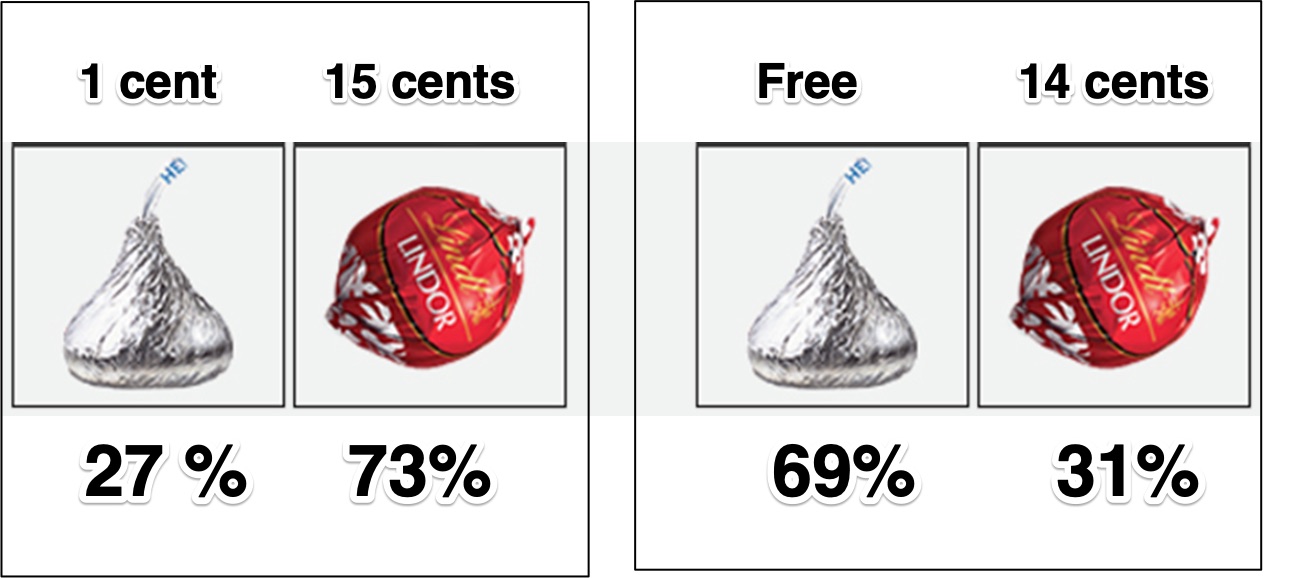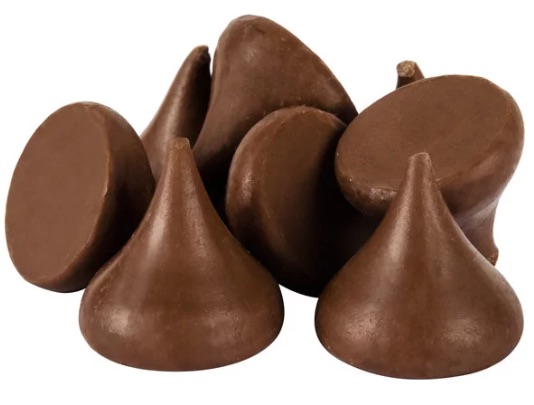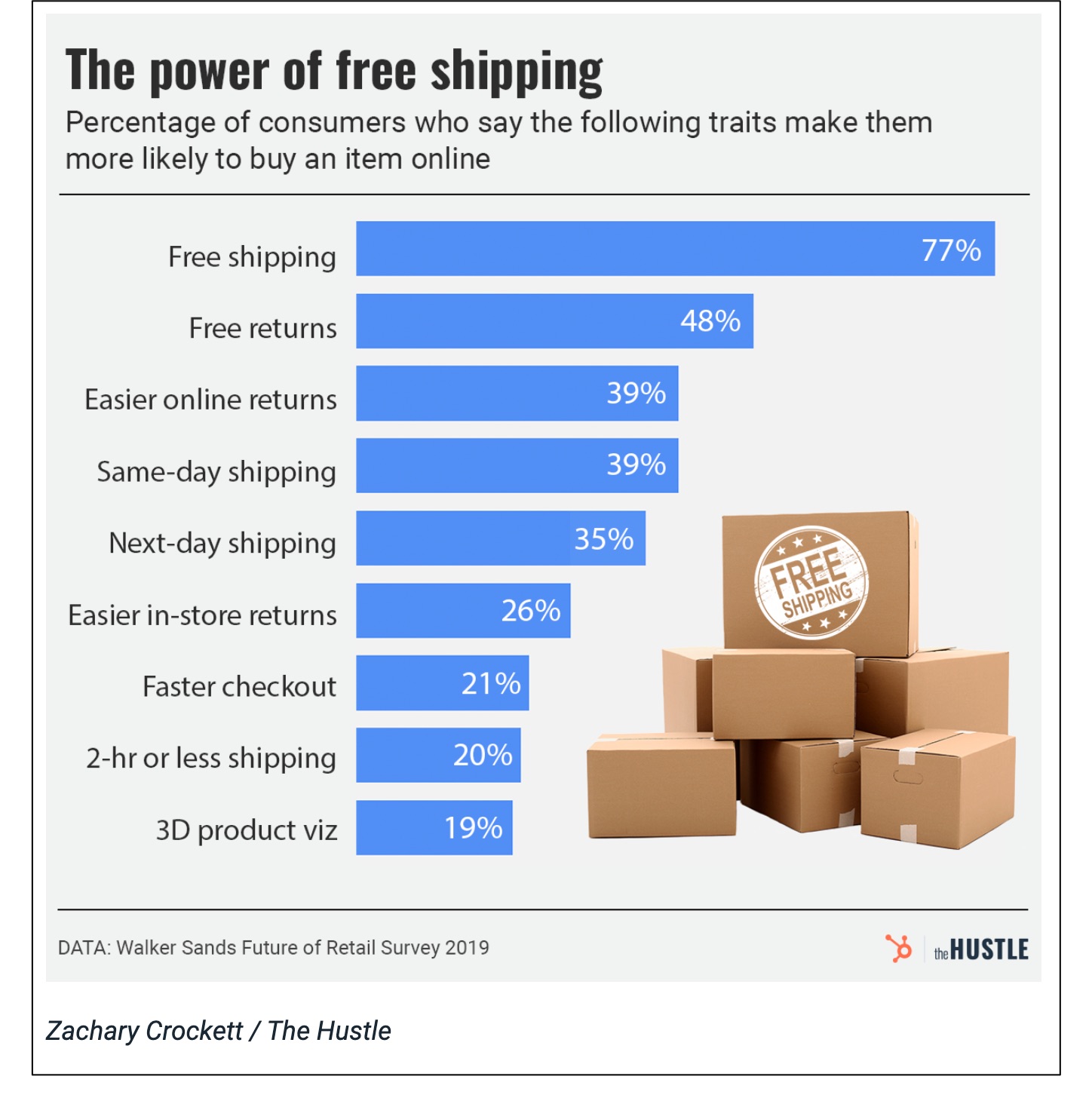Whether it’s chocolate or shipping, “free” changes our behavior.
The Impact of Free Chocolate
Offered a Hershey’s Kiss for one penny or a tastier upscale Lindt Truffle for 15 cents, 73 percent of a Dan Ariely study chose the truffle. But then, when the price of each went down by a penny, the truffle’s demand sunk to 31 percent because the Kiss was free:

The Impact of Free Shipping
Approximately 20 years ago, when Amazon was mostly a book and CD seller, we needed a $25 minimum order for a delivery 8 to 10-days later. To get 2-day delivery, we paid an extra $9.48 while one day was a whopping $16.48.
Amazon’s CEO Jeff Bezon knew he needed something better.
So, during 2004, on a Saturday during the holiday season, he met with a group of executives. The result was a $79 two-day subscription that you could share it with four family members. The rest of the story is shipping history. Now Amazon Prime has more than 200 million members.
On their website, although Prime is $139 annually or 14.99 a month, everywhere they use the word, “free.”

Investigating how we respond to free shipping, researchers reported that consumers were even willing to pay more for an item if they paid nothing for the delivery:
 Our Bottom Line: Thinking at the Margin
Our Bottom Line: Thinking at the Margin
Amazon helped us believe we had free shipping because of how we think at the margin. As an imaginary line that divides what we do from the extras we can decide to do, the margin affects our incentives.
Amazon Prime moved the margin for shipping.
To grasp “the margin,” let’s assume for a moment that you need access to a parking space near where you work. You can purchase a monthly pass that lets you park as many times as you want for 30 days. Or, you can pay for a spot every time you go to work. The deal you select–a monthly or daily margin– determines your incentives. With the monthly, it is likely you will go to work more frequently. However, with the daily, you drive less frequently because you pay for each visit.
Similarly, Amazon Prime changed the decisions we make at the margin. By moving that margin from each purchase to each month or year, it created new incentives. It makes us believe we have free shipping.
Alfred Marshall (1842-1924) was the economist who first recognized the significance of the margin. He let us see that the cost of something extra is the key to understanding demand- and supply-side behavior. As a result, we could say that Marshall helps us see that the Amazon Prime phenomenon is about more than a fee with a prime number. It also increased what we buy because it moved the margins for shipping costs.
My sources and more: Vox told us the Prime story here while Dan Ariely looked at free chocolates in Predictably Irrational. Also, I thank The Hustle for inspiring today’s post.
Please note that several sentences in Our Bottom Line were in a previous post.


 Our Bottom Line: Thinking at the Margin
Our Bottom Line: Thinking at the Margin



